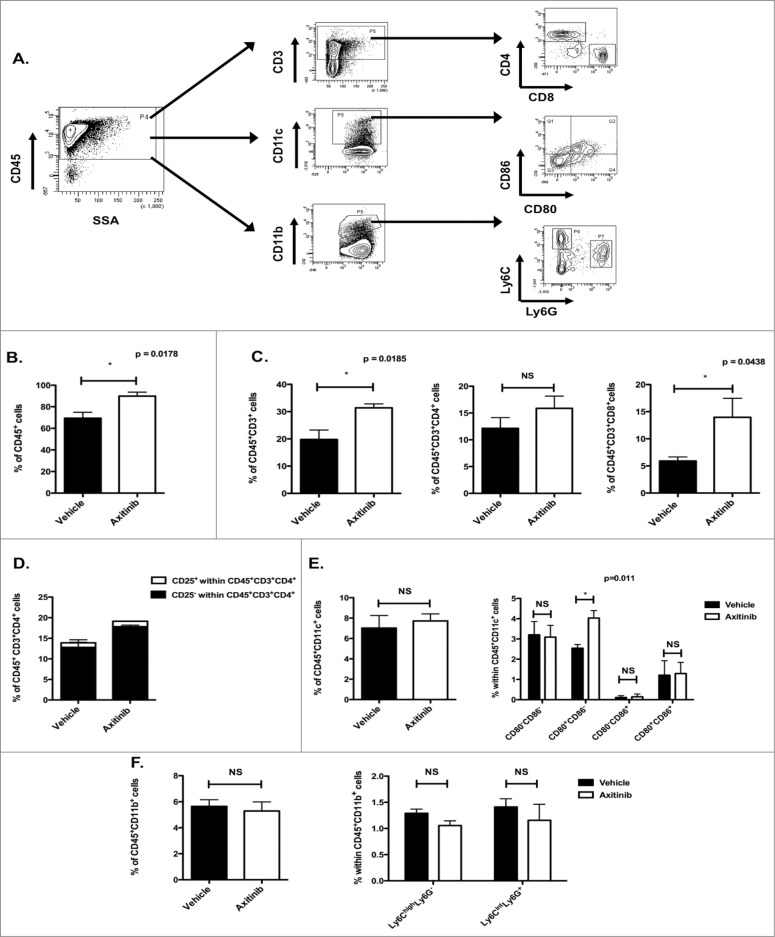Figure 2.
(see previous page). In vivo treatment with axitinib increases the number of CD8+ T cells in the spleen. Different immune cell populations were analyzed in the spleen of subcutaneous MO4-bearing mice after treatment with axitinib at 25 mg/kg bid or vehicle by oral gavage. On the 7th day of treatment mice were sacrificed and single cell suspensions of the spleen were made and subsequently analyzed through flow cytometry. The total number of CD45+ cells was significantly increased in axitinib-treated mice as compared to vehicle-treated mice (B.). Within this CD45+ cell population there was a significant increase of CD3+CD8+ T cells (C.). (A). Gating strategy for different immune cell populations. (B). Percentage of CD45+ cells within the spleen of vehicle- and axitinib-treated mice. (C). Percentage of CD45+CD3+ T cells within the CD45+ cell population. Within the CD3+ cell population the percentage CD3+CD4+ and CD3+CD8+ T cells was determined. (D). Percentage of CD25+CD4+ (Treg) and CD25-CD4+ T cells as shown within the total population of CD4+ T cells. (E). Percentage of CD11c+ cells (DCs) within the CD45+ cell population. The percentage of CD80 and CD86 expression within the CD45+CD11c+ population was also determined. (F). Percentage of CD11b+ cells (myeloid cells) within the CD45+ cell population. Further differentiation in different subsets of MDSCs within the CD45+CD11b+ population was determined through expression of Ly6C and Ly6G: Ly6ChighLy6G- (moMDSC) and Ly6CintLy6G+ (grMDSC). Three independent experiments were performed (3 mice per group) and results are presented as mean ± SEM.

